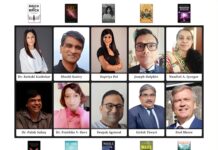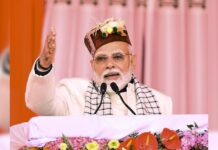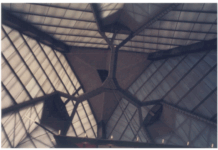PANAJI: Even as the 4th edition of the Serendipity Arts Festival – a multidisciplinary art event set over a period of eight days, curated by a panel of 14 artists and institutional figures is underway in Goa, Sunil Kant Munjal, who set up the Serendipity Arts Foundation and is the Chairman of Hero Enterprise, insists that the government will need to do much more to encourage the arts.
Insisting that across the world, establishment of major museums, art foundations and universities is mostly done through individual contributions and philanthropy, Munjal feels that the same has been possible there owing to the tax benefits and regulations.
“Here, the system does not push you in that direction at all. When CSR started, companies started doing something. People in the west give liberally for setting up art institutions, and foundations as they get an excellence tax break, a win-win for all concerned. We must tweak our system in order to encourage people to contribute. And this can be done only if there is a substantial tax break, after all that is a major decider when it comes to corporate policies,” he tells IANS.
Remembering that the Serendipity Arts Festival was conceived in 2015 post his conversations with artists during which they noticed that a large majority of people were not getting actively involved in many aspects of the arts and only a minority managed access, Munjal says that in a country of India’s size, complexity and diversity, for any kind of real impact, one needed scale – which led to the present avatar of the festival. And Goa was proved to be an ideal location – logistically well connected and place where people came to relax.
“Not to forget, this place also boasts of a very inclusive culture, which is one of the themes of the festival – to look at inclusivity and inclusion. It also brings down the current exclusivity that arts seem to enjoy right now,” he says.
The Serendipity Arts Foundation, which also boasts of research initiatives, residencies and education programmes, may not be planning festivals at other places, but they do take parts of this festival and put them up in other places like Hyderabad, Delhi, Mumbai, London, Dubai.
“We have requests from many states and countries to bring either parts or the entire festival. Frankly, it is important that the festival grows organically, it makes little sense to force the pace. It is only the fourth year, yet t has become one of the largest inter-disciplinary arts festivals in the world. Pushing it will involve risk and we don’t want to compromise on quality, execution, inclusivity, safety,” he says.
Talk him about the fact how many major festivals like the Jaipur Literature Festival, Kochi Biennale and Serendipity have been instrumental in pushing the local economy, and he adds, “In fact, an independent study of Serendipity’s impact was done last year, a time when it was just three years old. It showed dramatic improvement in the number of visitors in hotels, restaurants etc. Also, let us not forget the cultural impact on people’s mind and ethos towards looking at arts, crafts and culture as a stronger part of their own teaching. That’s the big long-term impact we hope this festival will have. It builds culture, and also what the world calls soft power.”
While many state governments have realized the importance of such festivals and are proactively supporting them in varied ways, Munjal doesn’t see why others (state governments) should not take a cue and invite groups/people to start something on similar lines.
“In other countries, the state and central governments not only provide facilitation, but they actually fund such festivals. In our case too, there are some programs supported by the government but it’s a small support that is offered by the central governments or states. Kochi and Serendipity are perfect examples of how large scale festivals can be built in partnerships with the governments . Art is not contained in one or two places, it is around us in every aspect of our lives. Each state has an amazing culture of its own. Even making and providing a platform to demonstrate that would be helpful.”
Stressing that for a nation as diverse as India, just five or ten major art festivals cannot be enough, Munjal adds, “India is more like a continent with people
coming from different backgrounds, cultures, faiths, preferences of cuisines and drape…There are so many interesting dimensions just waiting to be tapped into. And imagine the kind of events that can be created around them. One may not have a festival everywhere, but you can create many different scaled events around it, to focus on the various art forms that are popular in a particular state.”
He feels that the time is just right for a government and private partnership in arts.
“To be fair to the successive governments, they have made some good programmes. However, many are not really upto the mark. Now look at the state of many museums around the country. Despite boasting of priceless exhibits, several of them are in such a bad shape that one does not even feel like entering them.” IANS







